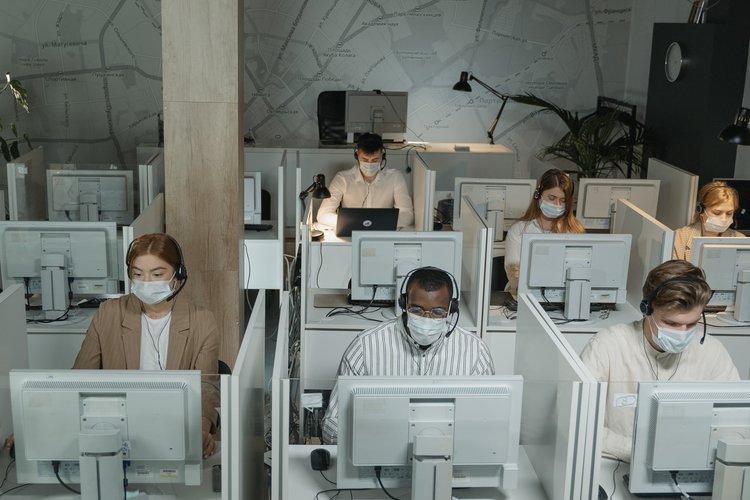Collaborative workspaces have been designed to meet the needs of employees ranging from millennials to generation Z.
The millennial workforce is often marked by the misconception that it is easily distracted and demotivated. Therefore, it is a challenge that most companies face in unlocking their true potential. They crave autonomy, and if you apply the paradigm to the way they like to work, it’s pretty obvious why they love the idea of coworking spaces.
Inherently collaborative and flexible by nature, coworking has seen many new trends and unique practices over the years. They are the new hub for ever-dynamic millennials looking for a suitable / ideal spectrum of amalgamation of work and play. Today, organizations strive to make their workplace the ideal environment for employees to thrive, and coworking spaces have proven to be an ideal driver in workplace productivity and collaboration.
Led by the emerging Gen Z population, the workforce has gradually evolved and so have workspaces, where desks are no longer limited to their primary utility and all employees desire a comprehensive workplace. . With a relatively conducive work environment, modern offices in the form of coworking spaces are more responsive to the needs of workers and are not limited to physical locations amid emerging mobility solutions provided by the major players in the segment.
1. Design
Collaborative workspaces are designed to meet the needs of employees, ranging from millennials to Gen Z. They have a strong aversion to being confined to a desk or cubicle, so it’s hard to miss out on those. Coworking spaces the most open designs with flexible configurations based on activities, seating areas, meeting capsules and terrace cafes that encourage conversations over coffee and food.
Shared workspaces with activity-based environments allow for greater collaboration and alternative work / meeting points to the workbench. In fact, relaxed meeting rooms and collaboration areas allow for the stimulation of informal interactions that meet the social needs of employees. Biophilic designs, indoor plants, and vertical gardens help bring a bit of nature indoors, allowing the millennial mind to not feel trapped within the confines of the office space.
2. Collaboration
In terms of perception and functionality, coworking is largely synonymous with collaboration. People share and formulate opinions based on their continuous interactions with other colleagues, which fosters a very open environment. Meaning can also come from working in a culture where helping each other is the norm, and there are many opportunities to do so; The variety of workers in the space means that peers have unique skill sets that they can provide to other members of the community.
People from different walks of life come together to work under the same roof. People with varied thoughts have varied ideas. Sometimes in a coworking environment, people collaborate to get ideas and results out of the ordinary. These thoughts are transformed into a final product that is only possible thanks to great minds that think differently. The growing trend of startups benefits greatly from these collaborations, which is not otherwise possible.
3. Where work meets life
According to a Harvard Business School survey, no more and no less than 94% of active professionals declared that they work more than 50 hours a week and almost half said they work more than 65 hours a week. With the increasing complexity of work, schedules are no longer rigid. Hence, it is vital to have an environment that prevents burnout. The socializing, the various activities on the floor, the music and the quirky atmosphere provide an environment that is otherwise lost when buried at work.
A perfect mix of work-life balance is achieved, while increasing employee productivity. Also, people who use coworking spaces find that their work makes sense. According to Harvard Business Review, the combination of a well-designed work environment and a well-crafted work experience is part of the reason that people who work in coworking spaces demonstrate higher levels of prosperity than their office counterparts.
4. Technology
Millennials today are looking for high-quality, high-speed connectivity, reliable and covetable products at work and are already shaping today’s office spaces. Laptops and smartphones will be transformed in the near future into voice-activated assistants, wearable technology, including wearable glasses, embedded chips and wrist devices connected to the Internet of Things (IoT), ensuring seamless connection. from work surfaces and people.
Video technology and speed of connectivity will ensure a true presence without commuting. Artificial intelligence, in fact, will even corroborate the shape, size and use of the furniture according to the data accumulated by the user.
5. Provide external stimulus
The new generation is passionate about social causes that benefit society at large and wants to partner with organizations that are not only customer-oriented, but also have a social mission. To the point that millennials can change their brand loyalty if they feel that the brand has a genuine commitment to social causes.
Coworking spaces are aware of the fact that being linked to a social cause helps the greater sense of connection with a workplace. Realizing that millennials and Gen Z make up a large part of the coworking community, organizations are now not only focusing on charity, but also using technology to track the impact and communicate it effectively. .
Shared workspaces are enjoying unprecedented success in recent years and are expected to enjoy uninterrupted growth with trends such as design, collaboration, technology, charity, and work-life balance in their core, so they are the ideal choice for the dynamic new age workforce.






